AccessSTEM Partner Capacity Building Institutes (2010 - 2011)
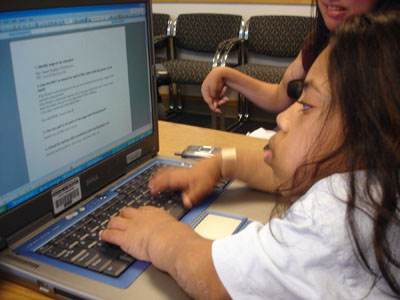
Six CBIs that were tailored to faculty, staff, service providers, and postsecondary students with disabilities took place at the University of Washington, Seattle Central Community College, and Bellevue College to explore ways to increase the participation of students with disabilities in STEM.
© 2011 University of Washington. Permission is granted to copy this publication for educational, non-commercial purposes, provided the source is acknowledged.
About the CBIs
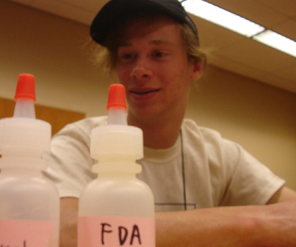
Six Capacity Building Institutes (CBIs) took place at the University of Washington (UW) in Seattle, Seattle Central Community College (SCCC), and Bellevue College (BC). Three practitioner-focused CBIs were tailored to faculty, staff, and service providers. Three student CBIs were tailored to postsecondary students with disabilities. The purpose of these CBIs was to explore ways to increase the participation of students with disabilities in science, technology, engineering, and mathematics (STEM) at three participating institutions. These six CBIs further explored issues discussed in an earlier CBI in which the three postsecondary schools collaborated with representatives from Seattle Public Schools; the proceedings document for this CBI is located here.
These activities were coordinated by the DO-IT (Disabilities, Opportunities, Internetworking, and Technology) Center at the UW in Seattle as part of its Alliance for Students with Disabilities in Science, Technology, Engineering, and Mathematics (AccessSTEM) project. AccessSTEM is funded by the National Science Foundation (grant # HRD-0833504) through the Research in Disabilities Education Program within the Division of Human Resources Development. Partners in AccessSTEM are the UW, SCCC, BC, and Seattle Public Schools (SPS).
Results of the CBIs are being used by AccessSTEM staff and partners to fine-tune activities supported by the project. Suggestions and feedback from multiple stakeholder groups are routinely sought in order to maximize project outcomes and impact. The CBI proceedings may be useful to others who wish to design programs to promote the success of students with disabilities in college studies in STEM. Guidance for conducting your own CBI can be found in the DO-IT publication Building Capacity for a Welcoming and Accessible Postsecondary Institution at Event Proceedings.
The following pages include a sample agenda, a description of participants, a summary of participant responses to CBI questions, and information on how interested parties can further engage with AccessSTEM on these topics.
Sample CBI Agenda
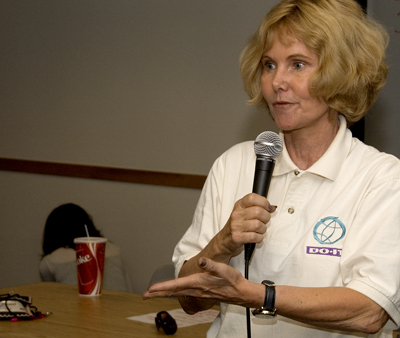
A typical agenda for the six AccessSTEM CBIs included the following activities:
- Introduction
- Welcome from STEM Administrators and Faculty
- Overview of Challenges Faced by Students with Disabilities Pursuing STEM and the AccessSTEM Project
- Student inputs and/or student panel discussion
- Practitioner stakeholder discussion with respect to the following questions:
- What are some specific things we can do this school year to support and encourage STEM students with disabilities?
- What are some specific things we can do this school year to recruit students with disabilities into STEM programs?
- What are specific ideas for recruiting undeclared freshman and sophomores?
- What are specific ideas for reaching out to high school students?
- Student discussions with respect to the following questions:
- Why do you think there is a smaller proportion of people with disabilities in STEM careers when compared to the rest of the population?
- What specific access issues for students with disabilities might there be in STEM courses and labs?
- At what point in their academic career do you think students with disabilities are turned off by STEM?
- In K-12 schools what are some of the inhibitors (that discourage participation) for students with disabilities to pursue STEM?
- As students, what advice do you have for improving access to STEM education?
- Report Out and Further Discussion
- Conclusion
- Evaluation
Participants
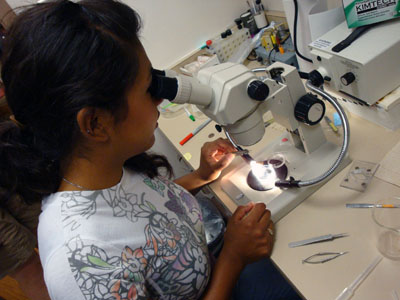
Practitioner CBIs
Forty-nine stakeholder participants and six students engaged with five project staff in the 2010-2011 AccessSTEM practitioner CBIs. Counseling and advising staff represented units that included engineering, chemistry, computer science, mathematics, and social science. Faculty members represented majors in materials science engineering, electrical engineering, mechanical engineering, computer science, chemistry, biology, mathematics, and social science. Other participants represented general campus services such as career services, veteran services, and disability support services. Three associate deans from the University of Washington College of Engineering were actively involved. Five students, who have disabilities, from AccessSTEM partner schools also participated in the practitioner CBIs:
- Patrick, bio-molecular design Ph.D. candidate
- Kate, computer science Ph.D. candidate
- Matthew, marine biology graduate student
- Justin, chemistry undergraduate
- Kayla, psychology undergraduate
- Anna, information technology undergraduate
Students offered their perspective regarding how to support the success of students with disabilities and shared their experiences in postsecondary STEM programs, accommodation needs, and challenges in pursuing STEM.
Student CBIs
Twenty students with disabilities at partner institutions participated in three AccessSTEM student CBIs. Their interests included careers in marine biology, genomics, aeronautical engineering, oncology, information security and policy analysts, circuit design, computational electromagnetics, biomedical and biological research, engineering, medicine, scientific writing and teaching, computer programming, and forensics.
Practitioner Discussions
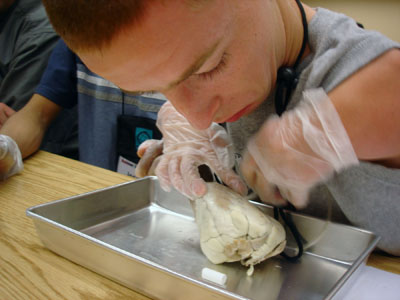
Participant suggestions that emerged in CBI discussions include those listed below.
What are some specific things we can do this school year to support and encourage STEM students with disabilities?
CBI participants suggested the following:
- Have AccessSTEM continue to share information about outreach opportunities to department chairs in STEM disciplines;
- Send AccessSTEM staff to meetings of graduate and undergraduate advisors to distribute materials and answer questions. Especially consider pre-engineering advisors. Seek out advising online distribution lists and newsletters;
- Engage with tutoring programs and study centers (e.g., the University of Washington's Engineering Study Centers);
- Offer to provide technical support for linking STEM department websites to the AccessSTEM website;
- Attend meetings of lab managers to offer guidance about universal design of computer and science labs;
- Inform faculty with existing NSF grants about Research Experiences for Undergraduates (REU) funds that can be used to hire students with disabilities;
- Attend trainings for new teacher assistants in STEM departments;
- Work at the dean level to encourage supportive and inclusive language on course syllabi and websites;
- Work with advisors to teach them how to encourage appropriate students to register with disability service offices
- Attend STEM faculty meetings to deliver presentations about project offerings;
- Connect with staff of career centers, transfer centers, and student programs (e.g., TRiO);
- Participate in events for veterans, many of whom have disabilities.
What are some specific things we can do this school year to recruit students with disabilities into STEM programs?
CBI participants suggested the following:
- Target AccessSTEM outreach to department chairs and meetings of graduate and undergraduate advisors;
- Conduct recruitment through specialty/introductory courses, such as UW's open enrollment "Introduction to Nanotechnology" class;
- Host custom workshops during events on campus, highlighting the achievement of students with disabilities and/or inviting them;
- Locate employees who have disabilities and ask them to serve as project mentors and recruiters;
- Engage with professional student societies, such as the American Society of Mechanical Engineers;
- Participate in departmental orientations for newly accepted STEM majors;
- Partner with alumni associations to market AccessSTEM project activities off-campus;
- Invite advisors to activities on campus for STEM students with disabilities so they can see the potential these students have for pursuing STEM;
- Have AccessSTEM staff available for consultations at disability services offices on the first few days of each term;
- Host public panels on campus that include people who are currently in successful STEM careers;
- Create a website for students that includes highlights of student achievements;
- Host information sessions for students with disabilities about jobs in STEM fields.
What are specific ideas for recruiting undeclared freshman and sophomores into STEM majors?
CBI participants suggested the following:
- Conduct recruitment in the dorms and seek out special housing programs (e.g., UW's "Engineering Community" in McCarty Dormitory);
- Send information to resident advisors of such programs;
- Share disability-related projects with the general student body and invite students with disabilities to learn more (e.g., UW's Mobile American Sign Language project);
- Encourage advisor's online tools to have AccessSTEM project information and links to the project website;
- Tap into existing student programs such as Emerging Leaders;
- Participate in all-college orientations for incoming freshmen;
- Invite students with disabilities to STEM faculty presentations and talks.
What are specific ideas for recruiting community college students into STEM programs?
CBI participants suggested the following:
- Invite community college students to the UW campus for weekend events, such as the College of Engineering Open House or AccessSTEM-sponsored labs;
- Send AccessSTEM project staff to annual meetings hosted by the UW Admissions office for advisors of community colleges;
- Partner with transition offices at the community colleges
What are specific ideas for reaching out to high school students?
CBI participants suggested the following:
- Consider working with UW Admissions, through a sanctioned entity such as the Executive Committee of the Dean's Office, to help make admissions outreach more effective and welcoming for students with disabilities;
- Recruit through the Department of Vocational Rehabilitation;
- Work with transition offices of Seattle Public Schools;
- Tap into existing programs such as GEAR UP;
- Send a brief recruitment email to Running Start coordinators at partner colleges, asking them to forward it to Running Start students;
- Send college students with disabilities into the high schools to recruit to the project as well as answer general questions about pursuing college and STEM.
Student Discussions
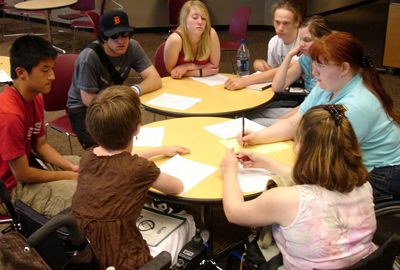
Participant suggestions that emerged in CBI discussions include those listed below.
Why do you think there is a smaller proportion of people with disabilities in STEM careers when compared to the rest of the population?
- Because students are not adequately prepared for postsecondary STEM studies in high school.
- In general, there are low expectations for students with disabilities; professors and teaching assistants lack an understanding of how students with disabilities can pursue STEM.
- The "weed-out" classes adversely affect students with disabilities on campus because accommodations are inadequate.
- STEM careers require a lot of education. More education necessitates more solutions regarding access and accommodations, thus increasing the risk of a fatal bump in the road.
- The limited accessibility of learning labs and externship sites can exclude students with disabilities.
- Lack of school funding for college, especially in cases where a student has to pay for adapted equipment, adequate care, or other disability-related products and support.
- Health or medication issues may hold them back.
- College freshmen who do not learn about STEM majors and admission requirements can make bad decisions that interfere with the pursuit of STEM majors.
Student participants provided the following advice:
- Encourage high schools to foster STEM education for all students.
- Work with students who miss school due to health issues to help them stay on track.
- At colleges, improve training for teaching assistants so that they understand the potential of students with disabilities as well as their accommodation needs.
- Carefully consider whether "weed out" classes are equally accessible to all.
- Improve access of learning labs and prepare materials to educate externship sites.
- Help students understand options for funding college.
- Provide better information to freshmen regarding STEM majors and admission requirements.
What specific access issues for students with disabilities might there be in STEM courses and labs?
- Many chemistry labs are not accessible to people who use wheelchairs.
- Some teaching assistants are not motivated to be good educators or to provide good service to students. Many are not trained well about campus policies, including those related to reasonable accommodation.
- For a student who relies on a sign language interpreter to translate the concepts, if the interpreter doesn't understand the subject at hand, important information may be lost in the process. This is particularly true of college-level STEM content.
- The collaboration required of advanced STEM students presents a challenge to deaf students because they need to schedule interpreters or revert to other means such as writing or typing. This problem becomes much more amplified in group environments.
- Some students have physical limitations when performing procedures in labs and other STEM activities.
- Students who have difficulty understanding social cues or verbal directions, may not receive the support when they need it from the instructor or other students.
Student participants provided the following advice:
- Improve the accessibility of STEM lab spaces.
- Improve training for teaching assistants.
- Educate faculty about potential accommodation needs of students.
- Increase nurturing for STEM students in general.
- Reduce STEM class sizes.
In K-12 schools what are some of the inhibitors that discourage STEM participation for students with disabilities?
- Lack of teacher enthusiasm for the curriculum.
- Poor teaching in general.
- Teachers that teach out of the book and not how to actually apply the material and achieve understanding.
- Inadequate support and mentoring to catch up when student might get behind due to disability- or health-related reasons.
- Lack of accessibility of labs or classrooms.
- Guidance counselors that only encourage students with disabilities into non-STEM majors.
- A student can hit a ceiling in math during high school and be forced to postpone further math studies.
- High schools that allow students with disabilities to graduate without inadequate science and math knowledge.
Student participants gave the following advice:
- Foster teacher development and improve quality of teachers.
- Work with students who miss school due to health issues to help them stay on track.
- Improve the accessibility of STEM lab spaces and classrooms.
- Provide training to guidance counselors to educate them about the potential of students with disabilities.
- Carefully consider mathematics extensions such as Running Start or additional classes at the high school.
- Ensure that all students have the proper math and science education before graduation.
- Recognize teachers who foster learning for all students.
AccessSTEM Website & Searchable Knowledge Base
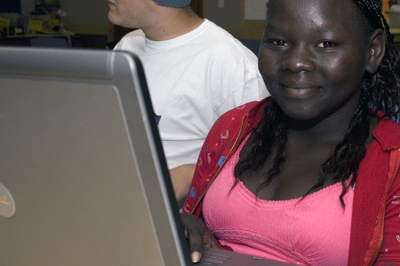
The AccessSTEM website contains:
- information about project goals
- resources for students with disabilities
- materials for postsecondary faculty and staff
- information on how to get involved, and program applications
AccessSTEM staff maintain a searchable database of frequently asked questions, case studies, and promising practices related to how educators and employers can fully include students with disabilities in computing activities. The Knowledge Base can be accessed by following the "Search Knowledge Base" link on the AccessSTEM website.
The Knowledge Base is an excellent resource for ideas that can be implemented in programs in order to better serve students with disabilities. Individuals and organizations are encouraged to propose questions and answers, case studies, and promising practices. In particular, the promising practices articles serve to spread the word about practices that show evidence of improving the participation of people with disabilities in STEM. Contributions and suggestions can be sent to doit@uw.edu.
Further Communication
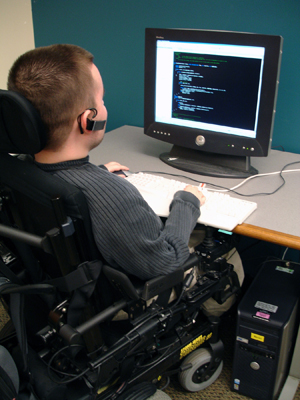
The STEM Educators Community of Practice (STEMed CoP) is populated with STEM K-12 and postsecondary educators and administrators interested in promoting the success of students with disabilities in STEM courses and careers. Participants:
- gain and share knowledge and help identify issues related to the under-representation of people with disabilities in STEM fields
- introduce AccessSTEM staff to administrators of professional STEM organizations so that staff can help these organizations make their websites accessible, their conferences accessible to attendees with disabilities, and their conference programs inclusive of disability-related topics
- help plan, attend, and/or recruit others to attend CBIs
- identify STEM events that students with disabilities might be invited
- discuss how to include accessibility topics in STEM curricula
- provide connections with STEM faculty and industry for internships
- help AccessSTEM staff target articles to STEM publications
Interested individuals can join the STEMed CoP by contacting doit@uw.edu.
To communicate with DO-IT staff, send an email message to doit@uw.edu.
DO-IT
University of Washington
Box 354842
Seattle, WA 98195-4842
doit@uw.edu
www.washington.edu/doit
206-685-DOIT (3648) (voice/TTY)
888-972-DOIT (3648) (toll free voice/TTY)
206-221-4171 (FAX)
509-328-9331 (voice/TTY) Spokane
Founder and Director: Sheryl Burgstahler, Ph.D.
Program Manager: Scott Bellman
Acknowledgments
The AccessSTEM Capacity Building Institutes were funded by the National Science Foundation through AccessSTEM under grant #HRD-0833504. Any opinions, findings, conclusions, or recommendations expressed in this document are those of the participants and do not necessarily reflect the views of the National Science Foundation.